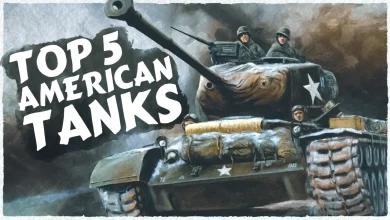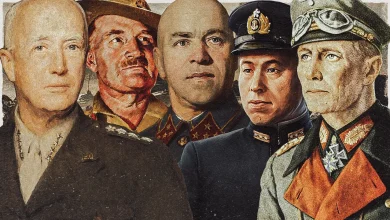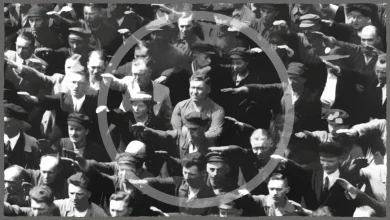The KV-2 that single-handedly held up the entire 6th Panzer Division for a day
On June 24, 1941, during the desperate fight to defend Raseiniai in Lithuania from the massive German offensive, one Soviet KV2 tank crew decided to stop and make a difference. While the Soviets retreated in masses, the KV2 tank bravely held off the enemy as long as it could before the much-needed reinforcements arrived. The valiant crew would hold the advance of the entire 6th Panzerdivision for a whole day, defending the only road through which the Germans could advance and continue their invasion as part of Operation Barbarossa. The lone KV2 tank fought to the last man while outnumbered and outgunned, but when the fight was finally over, the unthinkable happened...
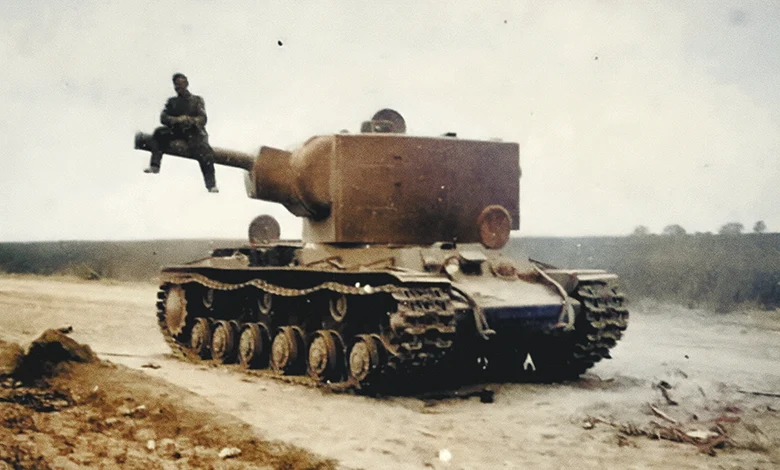
The Eastern Blitzkrieg
After the annexation of Austria, Czechoslovakia, and ultimately Poland, the United Kingdom and France decided to go to war to prevent Germany from becoming a world power once again.
While this happened, Adolf Hitler had signed a secret peace treaty with Stalin. Both nations took over half of Poland, and the Reich turned its attention to face its Western counterparts. Still, their armies ramped up production and began to concentrate along the borders of the USSR.
Then, on June 22, 1941, the largest invasion in history was launched, and over four million Axis soldiers marched into the Soviet Union across a front that was more than 2,500 kilometers long.
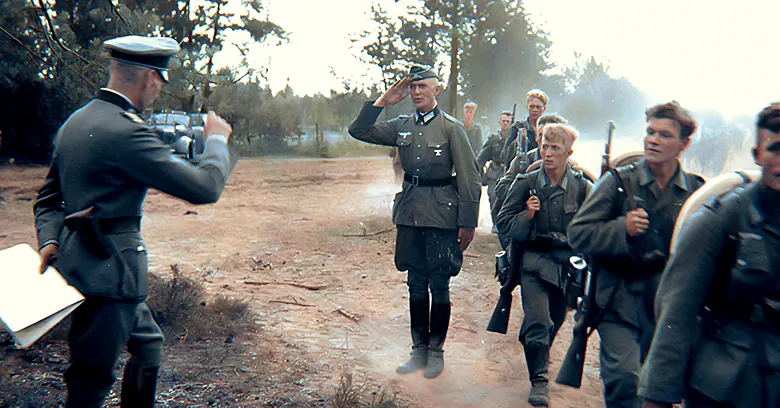
During the first days of the offensive, the Blitzkrieg forces advanced relentlessly, pushing back the Soviet armies without any resistance. It seemed as if the Germans were going to reach Moscow in days.
However, Soviet forces began to slowly regroup and, after the initial concussion, quickly reorganized with tens of thousands of fresh recruits.
Although the German Army Group North penetrated Soviet defenses without any significant problems, the conquest of the Lithuanian city of Raseiniai proved more complicated than expected.
The objective was to take control of strategic river crossings in Lithuania, which comprised the Neman and Dubysa rivers near Kaunas and the village of Raseiniai.
Over 250 German tanks from Kampfgruppes Raus and Von Seckendorff, a part of the 4th Panzer Group from the 6th Panzer Division, then began making their way through the town seizing their objectives. However, they were baffled by a new enemy they had been unaware of.
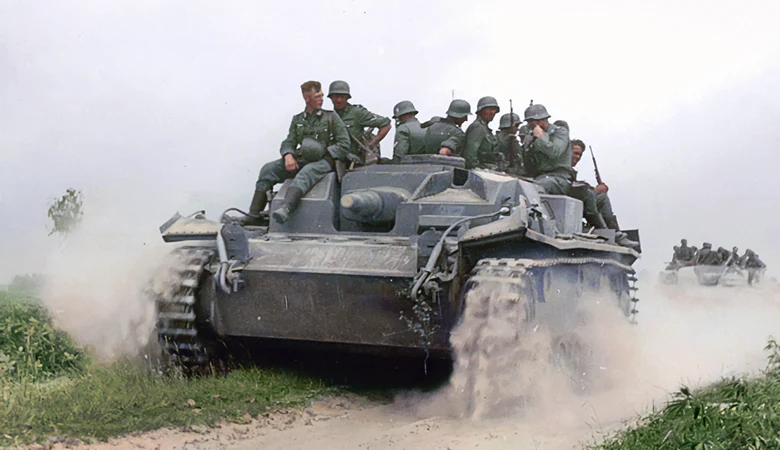
The Kliment Voroshilov tank II, also known as the KV-2, had armor so thick that no German panzer or anti-tank weapon of the time could penetrate it. Unfortunately for the eager German infantry, they would find out the hard way.
The KV-2 Kliment Voroshilov tank
When the Germans first saw the KV-2 tank in action, they knew very little of this secret Soviet heavy vehicle. Named after the Soviet People’s Commissar and Minister for Defense, Marshal Kliment Voroshilov, the KV-2 heavy tank was developed months before the Soviet-Finnish War erupted.
The tank had a length of 6.67 meters, a width of 3.35 meters, and a height of 3.25 meters. It also weighed 52 tons and was manned by a crew of six, while its maximum speed was 28 kilometers per hour and had an operational range of some 200 kilometers. However, this varied depending on the version.
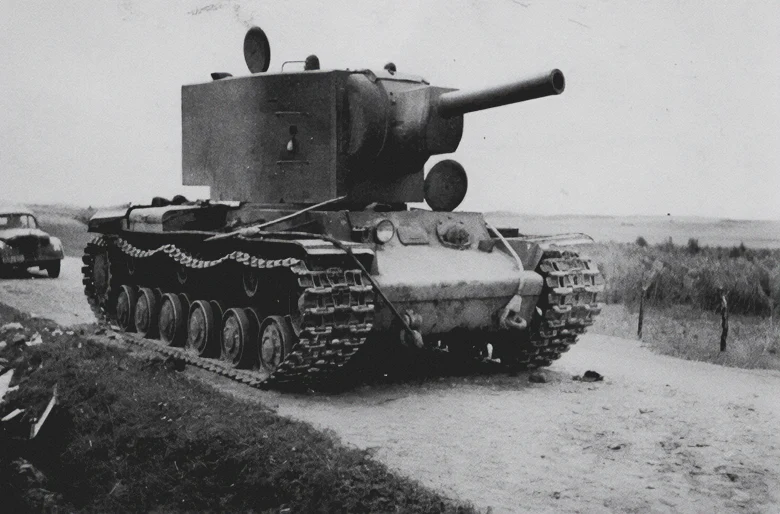
Its main armament consisted of a 152-millimeter M10 Howitzer with 20 rounds and two DP-27 machine guns with over 2,000 rounds. The main innovation of the KV-2 was its armor, which proved immune against the 3.7-centimeter KWK 36 and 7.5-centimeter KWK 37 guns mounted on the German Panzer IIIs and IVs.
The KV-2 also proved unbeatable against most German anti-tank weapons, forcing the infantry to resort to flank tactics to destroy them effectively from behind or with direct fire from 8.8-centimeter flak guns.
The massive vehicle was used for the first time during the Winter War against the Finnish, where the slow and clunky KV-2 metal beasts slowly closed in on the Mannerheim line, wholly exposed to enemy fire in a display of military superiority.
However, the Finns eventually found a way to take them down by launching grenades and Molotov cocktails and even planting satchel charges. Despite their impressive armor, the tanks were not invincible.
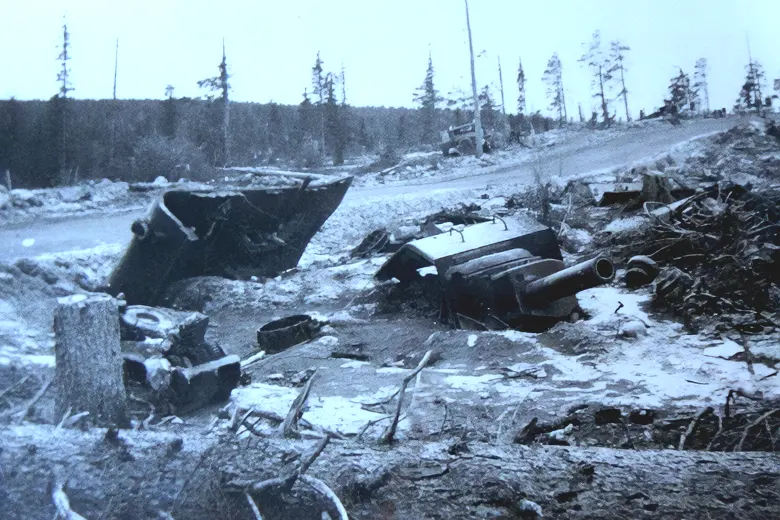
Last Stand at Raseiniai
When the formation of 250 Panzer 35Ts faced the armored columns of over 750 Soviet KV-2 tanks on June 22, the ground trembled. The Germans could not believe that their 3.7-centimeter KWK 34 guns barely scratched the armor of the heavy KV-2s.
Even worse, the entire Soviet motorized defense force attacked the German garrison in an unstoppable violent wave. Although the Soviets attacked the German forces after their flanking maneuver failed, they quickly went through the infantry and artillery formations thanks to their heavy armor.
Suddenly, a ferocious close-quarters combat broke out between the infantry, tanks, and artillery guns. The Germans quickly regrouped, closed ranks, and began to attack from afar to prevent more casualties at the hands of the powerful cannons from the KV-2s.
Still, the Soviet tanks did as much damage as possible before running out of ammunition. And when they did, they simply approached the German anti-tank guns and ran over them.
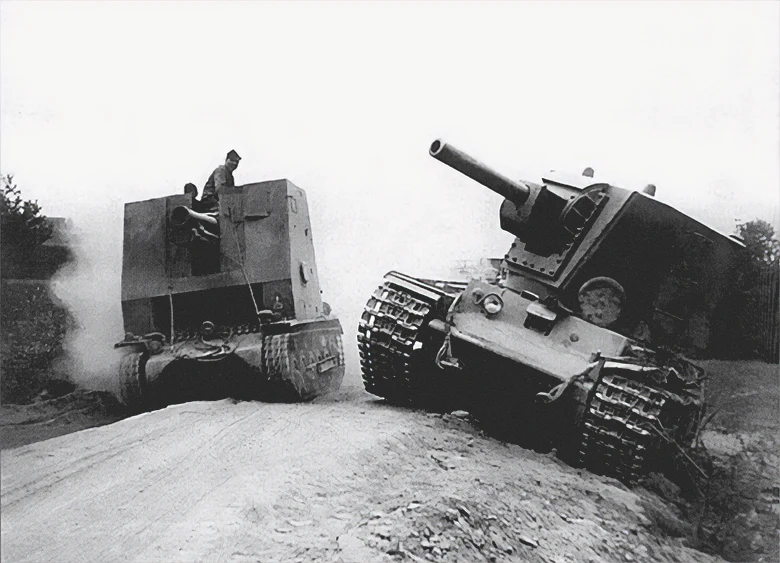
According to Maxim Kolomiets, editor-in-chief of the Front Illustration magazine, a German Captain that went by the name of Zelwach wrote in his diary: “This morning, like our headquarters and I reached the road fork northeast of Raseiniai, panic set in. A few super-heavy Russian tanks broke through our positions, went to our rear, and caused great confusion and destruction. A large number of vehicles, guns, and even 150-mm howitzers, which fired to the last, were simply crushed and rolled into the ground. The situation was overshadowed by the fact that our guns did not penetrate his armor. I myself saw from a close distance how this Russian monster received 8 direct hits from our 75-mm tank gun and quite calmly drove on.”
The tight coordination that ground forces had with the Luftwaffe helped the Panzer groups to counterattack. Luftflotte 1 provided extensive support to halt the Soviet advance, while the Germans prepared their 88-millimeter anti-aircraft guns to tear the Soviet KV-2s apart.
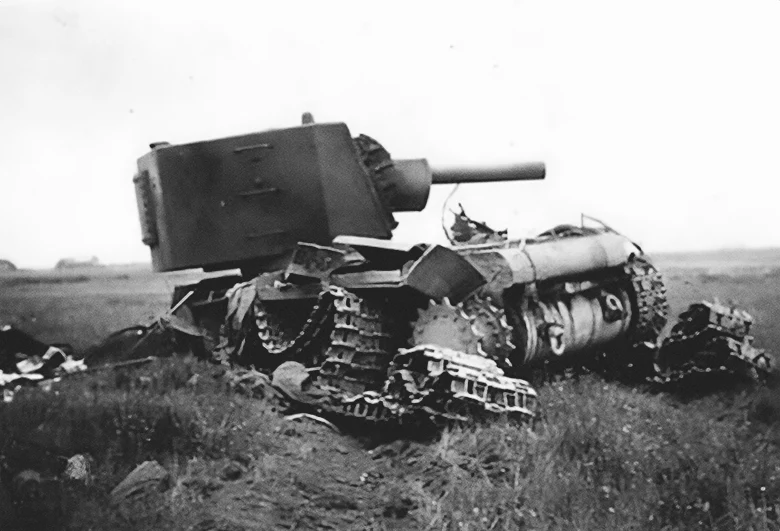
Only then did the German forces begin to take control of the field. As the Soviets ran for cover from the guns, the German infantry snuck up from behind and planted sticky bombs on the tracks of the tanks to immobilize and destroy them. The 6th Panzer division lost about 200 men, 30 tanks, and 40 motorcycles but managed to push back the surviving KV-2 tanks.
Late in the afternoon, Combat Group Seckendorf received reinforcements, while the forces from Kampfgruppes Raus eliminated the remains of the Soviet resistance.
A Standoff
During the night of June 23, the civilians in the vicinity watched a lone and battered KV-2 tank approach the main road and plant itself in the middle to prevent any other vehicle from passing by. It was the back road through which the Germans were supplied.
The tank would not move again during the 5-day battle, and the witnesses even believed the crew ran out of fuel, left the tank during the night, and forgot about it.
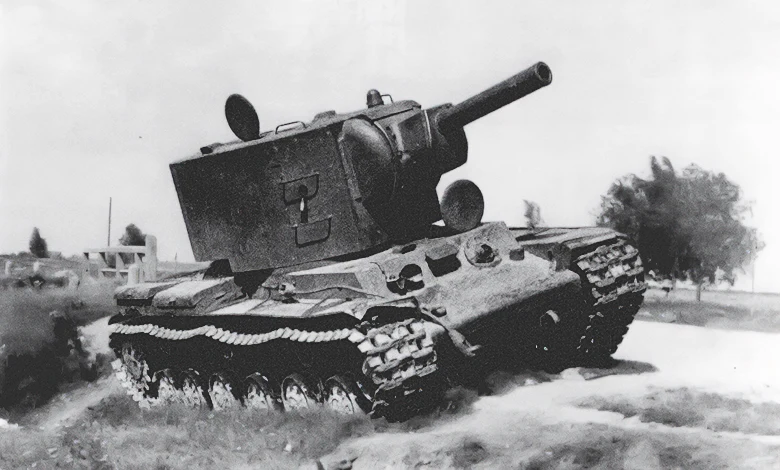
Then, on June 24, a convoy of Soviet prisoners and wounded German soldiers approached the road and watched the lone KV-2 tank from afar. The vanguard believed it was left there to rot, but then something strange happened.
One of the front drivers watched in awe as the tank’s turret slowly turned and then stopped, aiming at them. He blinked, puzzled, and an instant later a whistling sound pierced the air and passed close to the convoy. The Germans quickly turned around and returned to base to ask for more tanks to eliminate the KV-2. But it was too late.
An hour later, a convoy of 12 trucks carrying fuel and ammunition was utterly destroyed by the lone KV-2 standing in the middle of the road. Traffic jams rapidly formed on both sides of the road. The offensive was slowly getting stopped by one Soviet tank burning under the suffocating sun.
Colonel Erhard Raus quickly dispatched troops to destroy the tank, and a battery of four 50-millimeter AT guns fired seven shots at the KV-2. However, nothing happened. Then the turret slowly turned, aimed at the German crews, and fired.
The KV-2 remained still, and an 88-millimeter was then brought to destroy it from 700 meters. While the crew prepared the weapon, the tank stood silent and then fired one accurate shot, destroying the gun.
Colonel Raus would later recall: “It turned out that the crew and the tank commander had nerves of iron. They coolly watched the approach of the anti-aircraft gun without disturbing it, since as long as the gun was moving, it posed no threat to the tank. Then came a critical moment in the duel of nerves, when the crew began to prepare the anti-aircraft gun for the shot. It was time for the tank crew to act. While the gunners, terribly nervous, pointed and loaded the gun, the tank turned the turret and fired first!”
The KV-2 then terminated the other two 20-millimeter AAs that were brought along, and Colonel Raus decided to send sappers with dynamite to get rid of it. However, they had to wait until the morning.
Meanwhile, as the sun went down, another attack by the infantry carrying explosives failed. But when the morning came, Colonel Raus mobilized a column of panzers to distract the tank, and the infantry with explosives approached from behind to get close.
While the KV-2 tried to aim at the enemy tanks, the timid infantry raced for the vehicle and threw grenades through the armor holes to finish the crew. They then ran for cover, and the tank soon exploded.
Upon inspecting the tank, the Germans found the remains of six men. Colonel Raus and his men were so impressed by the crew’s bravery that they decided to bury them with full military honors. The remains were then transferred to a cemetery in Raseiniai in 1965. The names of the six road warriors remain unknown to this day.
